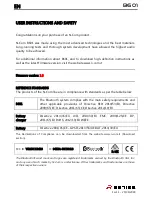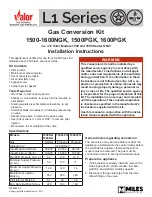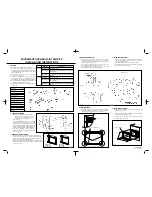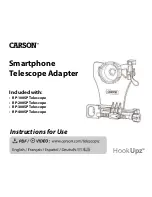
User Manual
Airbridge cBTS3612 CDMA Base Station
System Description
2 Hardware Architecture
2-48
2) GLONASS
GLONASS is a global satellite navigation system developed by the former Soviet
Union and inherited by Russia. It is of a similar structure to GPS. There are 24
satellites distributed on 3 orbits. The inclination of the orbit is 64.8
â
and the height is
18840~19940 km. The satellites go around the earth one circle every 11 hours 15
minutes and 44 seconds. Satellites are identified with frequency division
multi-address, i.e. different satellites use different frequencies. Since the inclination
of the orbits is greater than that of GPS, the visibility at high latitude area (over 50
â
)
is better than that of GPS. The design service life of the present satellites is 3~4
years. The service life of the new generation GLONASS will be 5 years, with
enhanced functions of inter-satellite data communication and autonomous running.
At present, only 19 satellites are working in the constellation and some of them are
not working well. The coverage is not as large as GPS system.
The user equipment receives C/A code, P code and two carrier signals modulated
from the navigation data L1: 1
<
fL1, L2: 1 246 MHz+
<
fL2 (
<
fL1,
<
fL2 are
frequency increments of different satellites), to identify the position of the satellite
and measure the distance between the user and the satellite. In this way, the
position of the user can be figured out. The algorithm used is similar to that of GPS.
Huawei BTS system uses intelligent software phase-locking and holdover
technology to minimize the interference such as signal wander and jitter due to
ionosphere error and troposphere error of GPS satellites. BTS system can not only
provide accurate timing signal, but also provide accurate calendar clock (hour,
minute, second). Huawei BTS supports GPS/GLONASS dual-satellite system
synchronization mode, providing two synchronization solutions (GPS or
GPS/GLONASS) as required by the user.
II. Antenna
l
GPS antenna
The antenna is an active antenna. The L1 band GPS signals received by GPS
antenna are filtered by a narrow-band filter and amplified by a preamplifier. Then
they are sent to a GPS receive card. GPS antenna supports all kinds of GPS
receivers. Performance indices are as follows:
Frequency: 1.575GHz
Bandwidth: 20MHz
Voltage: +5.0
!
0.25VDC
Current: 35mA
Impedance: 50Ù
















































